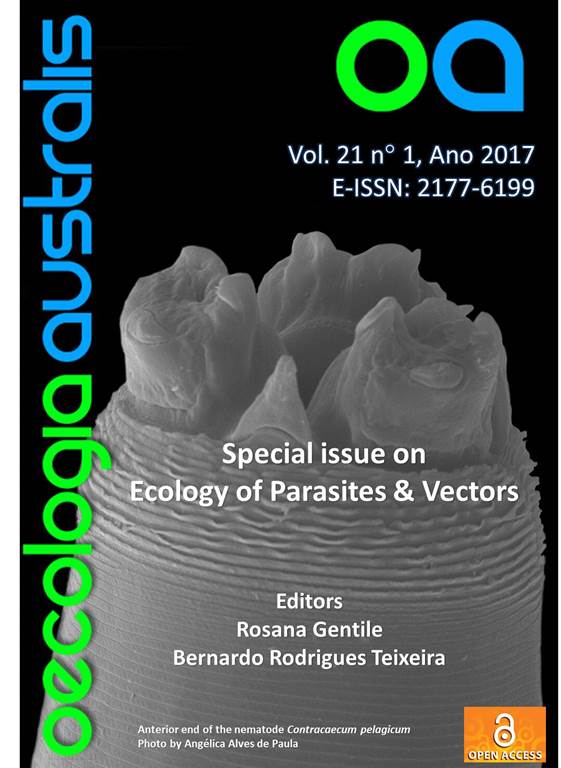USING DIFFERENT PROXIES TO PREDICT HANTAVIRUS DISEASE RISK IN SÃO PAULO STATE, BRAZIL
DOI:
https://doi.org/10.4257/oeco.2017.2101.04Keywords:
emergent diseases, landscape epidemiology, predictive power, risk maps, rodent host abundance.Abstract
Recent studies predict disease risk using different proxies, such as pathogen prevalence in hosts, abundance of the main hosts, and the number of reported disease cases. These proxies are used to build risk maps that can aid the prevention of new disease outbreaks. To date, these proxies have not been widely tested for differences in their predictions and effectiveness, which could have serious implications for disease control measures. In this study, we compared two different proxies inferring hantavirus disease risk in the state of São Paulo. We compared risk level distribution to the accuracy of risk maps using (a) Rodent Reservoir Abundance data (RRA) sampled in 2002--2008 and (b) Hantavirus Pulmonary Syndrome cases reported (RC) in 1993--2012. RRA data were collected within forest fragments and in the matrix of six landscapes, and were extrapolated for São Paulo State through regression models using the amount of forest cover and the collection context as predictors. Using Bayesian models, we created a HPS risk map using annual HPS incidence, climate, landscape structure metrics and social factors. We validated RRA and RC risk maps with actual reported HPS cases (2013--2015). These data were categorized according to risk levels and compared using histograms and correlations. The two risk maps (RRA and RC) had a low Pearson correlation (0,038) and a low covariance (0,016), indicating high uncertainty in the predictions between these two proxies. The RRA map predicted that 68% of the municipalities in the state are in the medium to high risk categories, while the RC map predicted only 6%. This indicates that the RRA risk map might be overestimating high risk areas. The RRA map also had a higher sensitivity than the RC map to newly reported cases, correctly identifying 82% of the cases in medium to high risk areas. On the other hand, the RC map had a higher specificity (91%), leading to better prediction of the low risk areas (31% for RRA map). Our results draw attention to the fact that different proxies can give different results and predict different risk levels and should be used carefully in disease studies.


